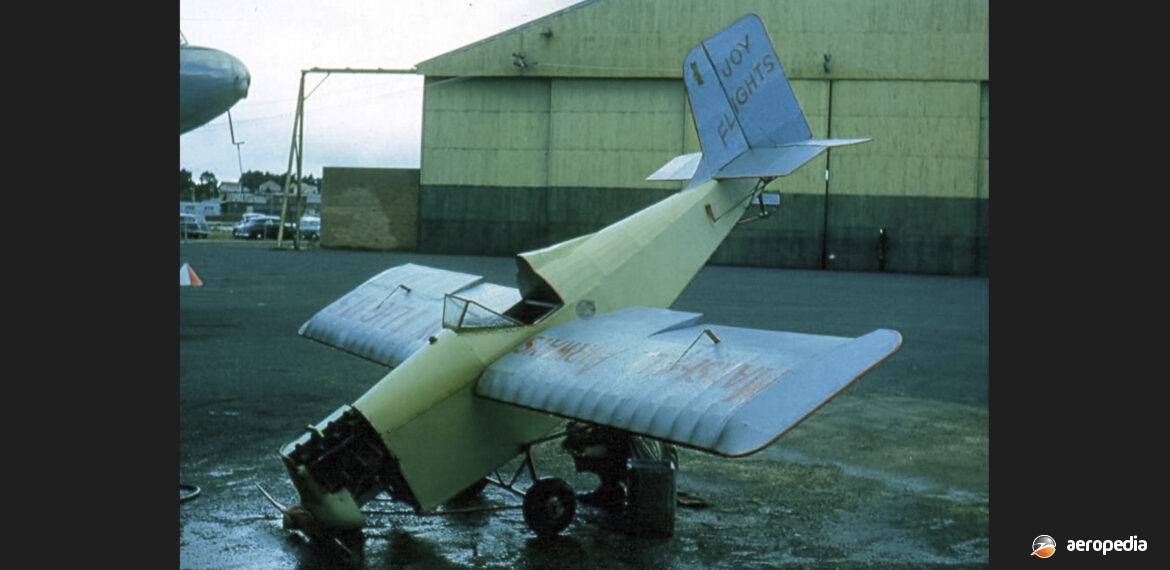Photograph:
The Parnall Penguin at Bankstown, NSW in July 1959 (David C Eyre)
Country of origin:
Australia
Description:
Single-seat light ground training aircraft
Power Plant:
One Henderson four-cylinder in-line converted motor cycle engine
Specifications:
- TBA
History:
The Parnall Penguin, also known as the Marshall Penguin, was designed and built by well known Australian aviation identity, the late Sidney Marshall, in the late 1950s. Mr Marshall, who was well known at Bankstown, NSW for his charter/joy riding operations around New South Wales with his company Marshall Airways, operated, amongst other aircraft, a Douglas DC-2, DH.84 Dragon, Short Scion, Lockheed 10, Avro Cadet, and a number of Avro Ansons. In his hangar and on a property near the airport he had two ex-RAAF Supermarine Spitfires, a Nakajima Hayabusa ‘Oscar’, and a Messerschmitt Bf 109 which had once been in the collection of the Australian War Memorial and was later again obtained by that museum, three other DC-2s etc. Because of his efforts all of these aircraft have survived.
The Penguin was built as a project, it is said, to teach future pilots to learn to taxi an aircraft prior to commencing full flying lessons in an aircraft. At one stage it was painted with a cream fuselage with a silver wing and red trim with ‘Marshall Airways’ appearing on top of the port wing; Joy Flights on the top of the starboard wing, and Joy Flights in red on the tail. The aircraft received little use and remained in his museum/hangar at Bankstown for many years, sometimes being placed outside the hangar for advertising purposes. After the death of Mr Marshall, the machine was transferred to the Airworld Museum at Wangaratta, VIC where it remained on display until the museum closed. It was later sold and exported to New Zealand where it has been restorated at Omaka.
“Penguin” was the name given during World War II to what were known as flightless simulators, aircraft built for that purpose, or conversions of retired aircraft to be used for taxiing etc but which could not fly. In the United Kingdom, de Havilland DH.82s were used, and on some occasions components from other aircraft were used.
In 1924 the Light Plane Competition was held at Richmond, NSW and much interest was shown in designing and building aircraft to enter. Mr Marshall designed and commenced construction of an aircraft in Sydney. However, construction progressed slowly. The welded steel tube fuselage was constructed but little else and it was not complete at the time of the competition. A Douglas engine was obtained and fitted to the engine mount. It seems the aircraft was never completed and its ultimate fate is not known.

